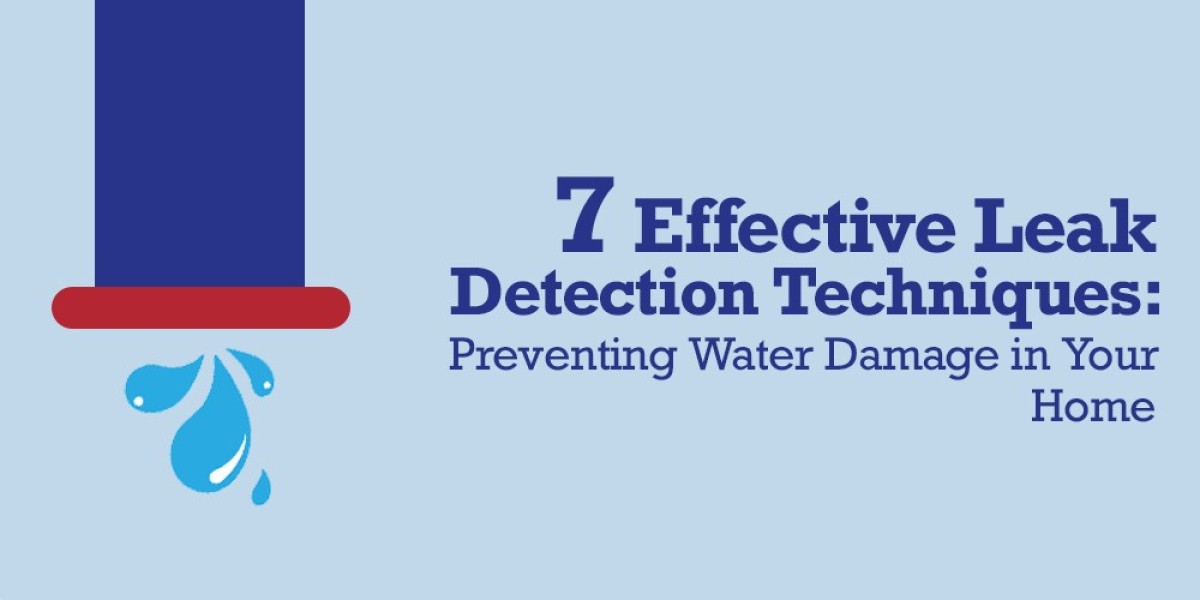Have you ever woken up in the middle of the night to the haunting sound of a mysterious drip? Fear not! The specter of water damage need not loom over your home. Today, we're diving into the world of leak detection techniques—your arsenal against the drip-drip-dread. With a pinch of vigilance and a dash of know-how, you can safeguard your home from structural nightmares, moldy horrors, and the ghastly specter of wasted cash. Let's unravel these practical, homeowner-friendly strategies and turn you into a leak-detecting superhero.
1. Visual Inspections: Spotting the Early Signs
The eyes have it! Regular visual inspections in moisture-prone areas, such as bathrooms, kitchens, and basements, are crucial for early leak detection. Signs to look for include water stains on ceilings or walls, warped flooring, or peeling paint, indicating potential water damage.
Tips for adequate visual inspections:
- Conduct inspections during daylight for better visibility of subtle signs.
- Check after a rainstorm for any fresh leaks or dampness.
- Use a flashlight to inspect dark corners and behind appliances.
- Look for mold or mildew, which can indicate moisture accumulation.
- Pay attention to musty odors, signaling hidden water damage.
2. Listening for Leaks: The Sound of Dripping Water
Quiet times, particularly at night, is crucial for detecting leaks in your home, as the absence of daily noise makes it easier to hear the subtle sounds of dripping or running water. This practice can lead to early detection of leaks, preventing potential damage and saving water.
Common areas for hidden leaks:
- Inside walls, where plumbing lines often run.
- Under floors, especially in homes with slab foundations.
- Near appliances and fixtures, such as toilets, sinks, and dishwashers.
- In basements and crawl spaces, where exposed piping is more common.
- Outside taps and irrigation systems, where leaks may go unnoticed.
3. Monitoring Water Bills for Unusual Increases
Hidden leaks can be indicated by a consistent rise in water bills without changes in consumption habits, resulting in water loss without your knowledge. This unnoticed flow increases the volume billed, revealing potential issues in the plumbing system.
To compare bills and spot anomalies:
- Gather your water bills from several months to a year.
- Compare the volume of water used each month; look for unexpected increases.
- Consider seasonal water-use variations that might affect the comparison.
- Look for a consistent upward trend in usage that doesn't match your activity.
- If you spot a significant, unexplained increase, it could indicate a leak.
- Contact a plumber for a professional leak detection service to locate and fix any leaks.
4. Dye Testing for Toilet Leaks
The dye test method is a simple and effective technique for identifying leaks in toilet tanks, which are often an unnoticed cause of significant water wastage. It relies on the visual tracking of colored dye to reveal water movement from the tank to the bowl without flushing.
Step-by-Step Guide for Performing a Dye Test:
- Use food coloring or a non-toxic dye tablet to create an intense color solution.
- Ensure the toilet bowl is free of existing cleaners or fresheners that might alter the dye's color.
- Lift the toilet tank lid and pour the dye solution into the water in the tank.
- Leave the dye in the tank without flushing for 15 to 30 minutes.
- After the wait, inspect the toilet bowl for signs of dye.
5. Using Moisture Meters for Hidden Leaks
Moisture meters are indispensable for uncovering hidden leaks by measuring elevated moisture levels behind walls and beneath floors. They operate by detecting the moisture content in materials, clearly indicating water presence without requiring invasive inspection.
Recommendations for Moisture Meters and Usage:
- Pin-Type Moisture Meters - Ideal for precise measurements, these meters use two pins to penetrate surfaces and assess the moisture level.
- Pinless Moisture Meters - Suitable for scanning larger areas without damaging surfaces, they use electromagnetic sensors and are perfect for tiles, brick, and concrete.
6. The Hose and Water Meter Test
The hose and water meter test becomes a diagnostic procedure used to detect hidden water leaks within a home by monitoring the water meter while suspending all water use. This method helps homeowners identify unnoticed leaks that could lead to increased water bills and potential damage.
Instructions for the Hose and Water Meter Test:
- Locate Your Water Meter
- Ensure All Water is Off
- Record the Initial Meter Reading
- Wait 1-2 Hours
- Recheck the meter
- Analyze the Results
7. Professional Leak Detection Services: When to Call in the Experts
Sometimes, the leak plays hard to get, and it's time to call in the big guns. Professional leak detection techniques in Shannon, AL, have the gadgets and gizmos to find leaks you didn't even know existed. Thermal imaging cameras, acoustic detectors—they've got it all.
Benefits of Professional Leak Detection:
- Advanced technology ensures leaks, even those hidden within walls or underground, are accurately located.
- Techniques like thermal imaging allow for leak detection without the need for disruptive digging or drilling.
- Early and precise detection prevents extensive water damage and can save on costly repairs.
- Professionals quickly identify the problem, significantly reducing the time spent on guesswork.
- Expert assessment confirms the presence or absence of leaks, providing homeowners with reassurance and a clear path forward.
Preventative Measures to Avoid Future Leaks
To safeguard your home against leaks and ensure the longevity of your plumbing system, adopt these essential maintenance and preventative practices:
- Regularly examine pipes, faucets, and toilets for signs of wear or damage, especially with changing seasons.
- Keep water pressure within safe limits to avoid stress on plumbing fixtures.
- Replace outdated or worn-out pipes, fixtures, and seals to prevent leaks.
- Use these devices in areas prone to leaks for early detection and prevention.
- Consider using a water softener to reduce pipe corrosion in areas with hard water.
- Properly maintain water-using appliances according to manufacturer recommendations to prevent leaks.
Drip Stops Here
Leaks, be gone! Armed with these seven leak detection techniques, you're ready to protect your castle from the dread of water damage. Incorporate these strategies into your home maintenance routine, and rest easy knowing you're keeping the drip-drip-dread at bay. And remember, when in doubt, calling in the pros can be the difference between a minor fix and a major fiasco. So, let's turn the tide on leaks and keep our homes dry, cozy, and, most importantly, water-damage-free.



